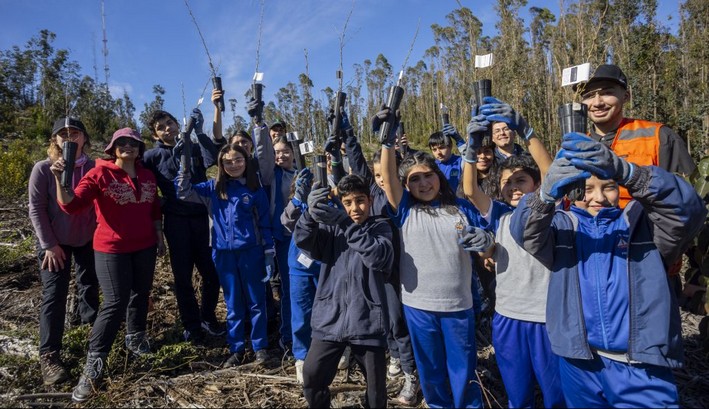Comptroller's Office: Conaf "did not communicate the necessary information to Senapred to declare an alert to the population"
On February 2, the first anniversary of the devastation caused by the wildfires in Valparaíso, Viña del Mar, and Quilpué will be marked, which claimed the lives of 137 people and destroyed over eight thousand homes. While the criminal investigation has three individuals in pretrial detention as alleged perpetrators of the mega-fire, the Comptroller's Office has completed its audit of the actions of the National Forestry Corporation (Conaf) during the emergency.
Regarding this, the oversight body explains that Conaf did not provide the fire progression modeling necessary for Senapred to adequately alert the population when the disasters began. In its audit—accessed by "El Mercurio"—it reconstructs how the events unfolded.
The Comptroller's Office states that Conaf acknowledges that "there was no specific modeling for each of the sectors" attacked by the fire but that it did carry out a projection of the fire's advance "with available information at different times."
The issue was that Conaf did have five platforms or software tools that would have allowed it to generate a projection. These included technological tools for real-time image transmission, satellite imagery visualization, and the projection of meteorological variables associated with wildfires.
However, there was only one modeling effort, conducted by Conaf's central office for Valparaíso, with a cutoff at 3:00 PM on February 2. The report notes that before the investigative committee of the Chamber of Deputies, a modeling was presented that estimated the fire's expansion at 323 hectares per hour, but the actual impact, compared afterward, was 2,338 hectares per hour.
The forestry authority defended itself against these criticisms by arguing that modeling is not always done with these tools but also through paper mapping and other methods. However, the Comptroller's Office dismissed this response, as Conaf could not prove that this had occurred in the case of the mega-fire.
"Explosive Progression"
Conaf also stated that "since preliminary information indicated the fire was advancing toward the lake—an interface area—it was decided to move the command post to Quilpué for a better view and to project its advance. However, en route to the new location, the team observed the explosive progression of the fire, which was far greater than expected. Therefore, at 6:23 PM, they directly requested the first SAE alert, understanding there was no time for analysis to model and inform Senapred. Thus, via radio communication from the staff's lead vehicle, they instructed Conaf's Regional Coordination Center (Cencor) to directly request SAE alerts from the National Early Warning Center due to the imminent danger to the community."
No Communication to Authorities
Conaf argues that it requested Senapred to issue red alerts for the affected sectors. However, the Comptroller's Office states that "regardless of Conaf's claims about the red alerts issued due to the various fires affecting the Valparaíso Region, it does not address the fact that it did not communicate to Senapred the necessary information for the latter to declare an alert to the population and all local, regional, provincial, or national authorities, as required by law."
For all these reasons, the Comptroller's Office ordered the inclusion of this information in the internal investigative process to determine the responsibilities of the personnel involved in these events.
Additionally, the Comptroller's audit identified issues in the contracting of aircraft leases for wildfire suppression, as well as failures in communication systems, among the operational problems in firefighting efforts.
Regarding administrative matters, the Comptroller's Office also raised objections to how overtime payments were made, both to executives and firefighters, among other issues.
Source:El Mercurio














